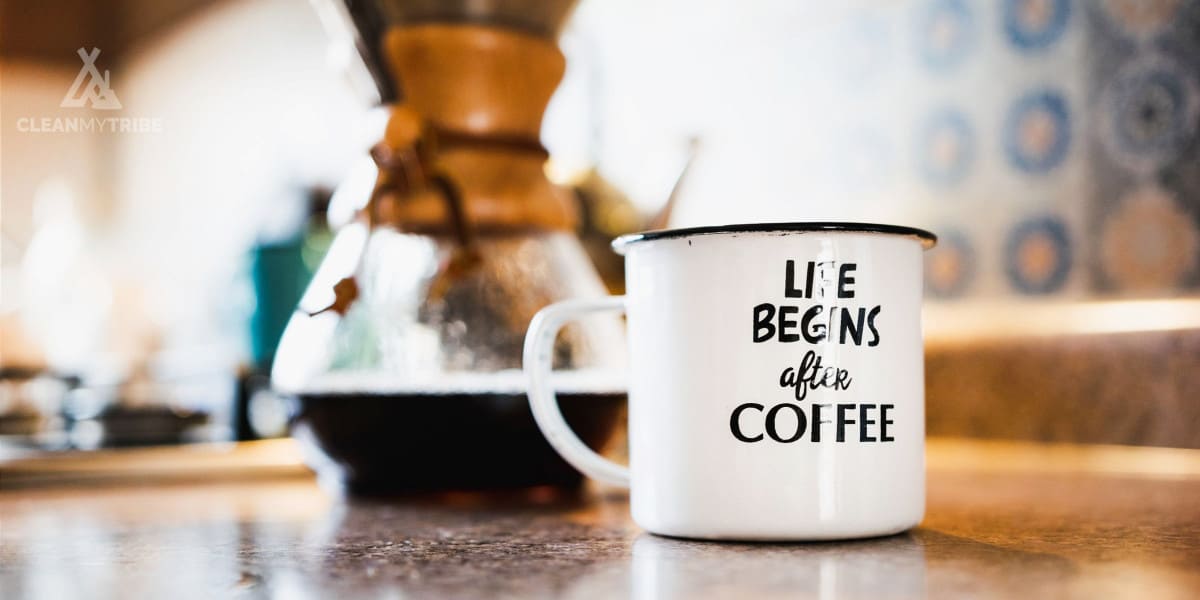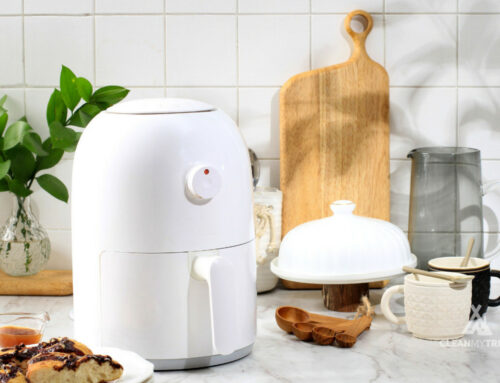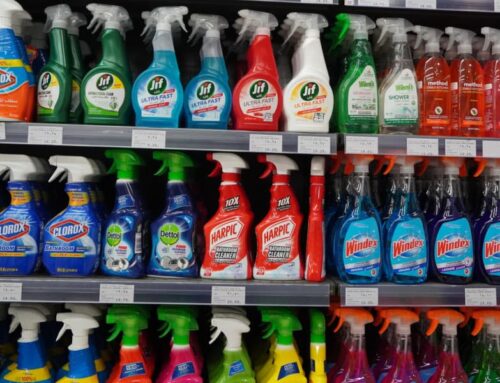Are you someone who needs coffee before kickstarting each day? We just love the smell of freshly brewed coffee in the mornings – that first sip jumpstarts your day, giving you the solace and warmth you never knew you needed(maybe). Perhaps that’s why coffee machines and various home brewing apparatuses are popping up everywhere. Many households have multiple coffee making setups these days.
“procaffeinating (n.) – tendency not to start anything until you’ve had a cup of coffee”
Each one of has our own favorite way to brew coffee- from drips, French presses to pour-overs. Of course, the Espresso Machines are probably one of the most convenient ways to enjoy coffee – with just a push of a button, you’re good to go. Here’s our Coffee Maker Cleaning Guide for you to enjoy the best tasting cup of your favorite caffeinated drink each morning.
Funky Tasting Coffee
Wondering why your favorite coffee suddenly tastes horrible? Please try to recall the last time you’ve properly cleaned your coffee maker. When you don’t clean your home for ages, there’s going to be funky smell. It’s the same thing here. Dirty brewing equipment is usually the culprit for that off-taste. Sometimes it leads to a metallic or plastic taste in your coffee. Since the interior of coffee setups are often moist, they’re the ideal breeding ground for mold and yeast. You’d want to keep the insides dry soon after you wash it.
If there’s residue clogging up the mesh filter, simply soak the filters in hot water first and then scrub using a brush. Use dish soap of vinegar only when necessary. Rinse thoroughly afterwards. If this doesn’t work, it’s time to replace your filter.
Regular cleaning is crucial, but let’s get into the finer details of how to clean each specific type of coffee maker. We want to make sure you’ll enjoy your freshly brewed hug in a cup every morning.
How to Clean Your Precious Coffee Maker?
1. French Press
The French Press Coffee Maker is a narrow cylindrical container with a plunger and a built-in screen filter. Aka coffee press or coffee plunger, this is a portable non-electric brewer that gently steeps coffee grounds in hot water. Carafes are either made of stainless steel, plastic, or glass, with the latter being the easiest to clean.
The classic Bodum Chambord’s borosilicate glass press is a highly popular choice. But if you’re after strong insulation and durability, consider buying the Frieling French Press Coffee Maker instead. It has a double-walled insulated stainless steel design that retains heat up to four times longer than glass vessels.
Manufacturer’s guide:
The Frieling French Press Manufacturer Manual recommends rinsing all components under hot tap water before your first brew. You may use regular dish soap when rinsing and dry with a towel after but avoid using abrasive sponges. Clean with a soft cloth only.
After each use, discard coffee grounds and rinse all components under hot tap water and towel dry. The Frieling French Press is made of durable stainless steel and all parts are dishwasher safe with no disassembling necessary.
French presses are notoriously messy to clean up. The brewing process involves pushing coffee grounds to the bottom of the vessel with a plunger. Hence, it’s unavoidable that wet grounds are stuck to both the plunger and the bottom of the carafe. Frieling has conveniently skipped out on the pain points of cleaning one.
Here’s our own guide:
First, fill the French press with water to get all the grounds loose from the bottom of the carafe. Then, pour the contents into a fine-mesh sieve. Just like that, those gritty grinds are out of there. Toss the grounds from the sieve and rinse it out. Now fill the carafe with soap and warm water, and move on to the plunger.
Plunge the top into the soapy water and move it up and down a few times. This will not only dislodge any grounds stuck in the plunger, but it will also help scrub the sides of the carafe.
2. Drip Coffee
Drip coffee makers are fast and easy-to-use electric brewers in which hot water passes through the coffee grounds to produce brewed coffee. Usually, drip coffee makers below $100 do not last very long, but we saw one on Amazon with great reviews – the Ninja 12-Cup Programmable Coffee Maker seems to be an exception. It has a 24-hour programmable delay feature that lets you brew ahead of time and an auto shut-off warming plate for a flavorful coffee that lasts for four hours.
Before your first use, wash all removable parts with warm water and wipe the warming plate with a damp cloth. Then, run two full classic brew cycles with plain water. In general, drip coffee makers have an easy clean up process. Just wash the reusable filter, brew basket, and carafe with warm, soapy water, then rinse. For a thorough clean, you can use a soft foam brush on the carafe. Wipe down the machine’s exterior and warming plate with a soft cloth.
To descale the drip coffee maker, fill the reservoir with equal parts of white vinegar and water, then run the coffee maker. If it has a cleaning feature, press the clean button. When the cycle is complete, refill with plain water and run another brew cycle to eliminate any lingering smell of vinegar.
3. Cold Brew
A Cold Brew coffee maker utilizes a hands-off brewing method where coffee grounds are steeped in cold water overnight. The resulting coffee is then dispensed into another container for serving.
New to cold brewing? Try OXO Good Grips 32 Ounce Cold Brew Coffee Maker and enjoy the smooth, low-acid coffee it produces. Its perforated rainmaker ensures a flavorful coffee extraction that will surely take your cold brewing process to the next level.
Some cold brew setups require a painstaking amount of clean-up. Not this one. The glass carafe of OXO Good Grips Cold Brew Coffee Maker is dishwasher safe and its other parts are hand washable with warm soapy water.
Unfortunately, the OXO Cold Brew Coffee Maker has a couple of drawbacks. It’s not as compact as other systems, and some customers experienced leakage when the filter is not properly tightened. The carafe is rather brittle and costs about $20 to replace. Some reviewers have mentioned the plastic exterior tends to stain. We still recommend this family-sized model for occasional use.
If you’re looking for a daily driver cold brewer, the Hario Mizudashi Cold Brew Coffee Pot is a better option. It has a compact slender design and is made of a glass carafe that minimizes the absorption of stale flavors from plastic. It’s a great portable version.
4. Pour-Over
A pour-over coffee maker employs a simple manual brewing method where hot water is poured to the coffee grounds placed in a cone-shaped filtered funnel. Popular among boutique coffee shops, the Chemex has the right balance of aesthetics and functionality. It has a non-porous borosilicate glass material which makes it non-absorbent to odors and chemical residues. Most models require use of a paper filter. Always rinse the paper filter with hot water prior to adding your coffee grounds. If you skip this step, the paper may affect the smell and taste of your brewed coffee.
Not a fan of using paper filters? The Bodum Pour Over Coffee Dripper is popular among coffee enthusiasts for this reason. It contains a stainless steel filter and a double-walled borosilicate glass carafe making it more durable and insulated than the Chemex.
Despite taking up more effort when brewing, the pour-over methods is much easier to use and clean than the than a French press. After every brew, toss out the used paper filter and coffee grounds. If you’re using a reusable filter, wash it together with the brew basket and carafe with warm, soapy water. Rinse and dry.
5. Percolator Coffee Maker
A Percolator, either stovetop or electric, is one of the most commonly used coffee makers. It’s typically a stainless-steel pitcher with 2 chambers. The bottom chamber contains water that will be heated. The top chamber is where the coffee grounds are placed. When heated, the hot water passes through a tube from the bottom chamber the to top, and saturates the coffee grounds suspended above. This cycles repeats continuously until the water boils, and the coffee is ready.
Whether you’re just lounging at home or up for a camping trip, this is an excellent choice. However, there are minor drawbacks: it takes longer to brew and could be a little tedious to clean due to grounds that stick at the bottom of the container.
Look for a durable and dishwasher-friendly stovetop percolator such as the Farberware 47053 Classic Stainless Steel Yosemite 12-Cup Coffee Percolator. Or an electric one like the Hamilton Beach 12 Cup Electric Percolator Coffee Maker. It doesn’t make much of a different, it just up to your preference. The electric ones have a ready-to-serve light that indicates when the coffee is ready.
Cleaning must be done after each use. Let the percolator cool down first before disassembling the parts. Wash the lid, basket, spreader, and stem in hot, soapy water. Then, add a drop of dishwashing detergent in the percolator and gently scrub with a sponge. Rinse and dry.
Caution:
● Do not immerse the electric percolator in water.
● Do not use abrasive pads in cleaning the exterior of the percolator
6. Moka Pot
The Moka Pot is a beloved stovetop coffee maker that offers an easy and quick way to brew coffee. It’s made up of 2 chambers like the percolator but they use different brewing mechanics. The moka pot uses pressure to produce an intensely-flavored drink in minimal brewing time. This classic traditional Italian coffee brewer is a good alternative for an espresso machine if you are on a tight budget.
Despite the growth in popularity of Moka pots, the Bialetti Moka Express StoveTop Coffee Maker remains a top seller. This Bialetti can be quite high-maintenance since it is made up of aluminum. If this is a deal-breaker, consider getting the Cuisinox Roma Stainless Steel Stovetop Moka Espresso Maker. The Cuisinox, although pricier, is favored due to its durable stainless steel and induction base that makes it possible to work on gas, electric and induction stovetops.
A classic Bialetti Moka Pot will last a lifetime if proper maintenance is observed. After every brew, make sure to hand wash with warm water and thoroughly dry before reassembling to prevent any oxidation. The user manual strongly suggests not to use dishwasher, detergent, and abrasive materials in cleaning the product.
7. AeroPress
Versatility, durability, and portability are just some of the key features of the AeroPress. This is a game-changer in the world of manual coffee brewing. It only takes less than a minute to produce a smooth, rich-flavored cup of coffee you’ll surely enjoy.
With AeroPress, cleaning is a breeze. Just press the plunger to eject the coffee grounds, then hand-wash it with dish soap and warm water. Rinse and dry.
However, like any other coffee maker, AeroPress has its own downsides. AeroPress users reported sticky and loose seals over time.
- To remove accumulated coffee oils, wash the seal with hot soapy water.
- To prevent a loose seal, the manual suggests removing it from the chamber after every brew.
I think we’ve covered most coffee making setups in this post. For an absolutely hassle-free cleaning, a coffee maker with a self-cleaning function would be your best bet. The Ninja 12-Cup Programmable Coffee Maker is one fantastic option. A regular cleaning routine keeps your coffee maker, and your cup of coffee at café-quality all year around. Enjoy!





